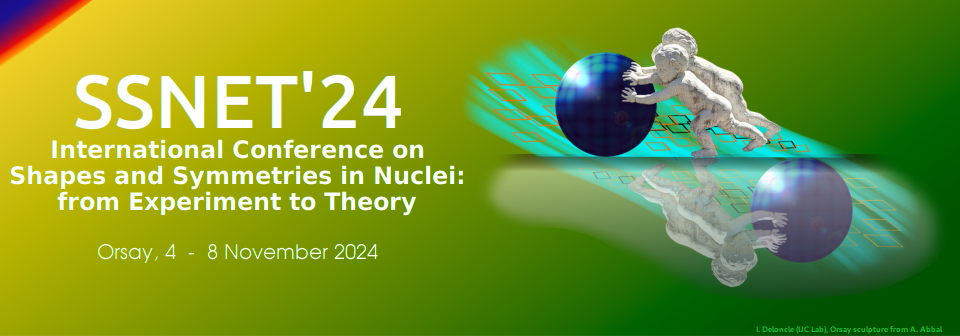Orateur
Description
In this talk we analyse the structure of super-heavy nuclei in a Beyond Mean Field Approach.
The calculations include the restoration of the particle-number and angular-momentum symmetries and the mixing of different shapes using the generator coordinate method. The importance of the $\gamma$ degree of freedom is highlighted by comparing the triaxial to axial-symmetric calculations performed within the same framework. In the calculations, the effective finite-range density-dependent Gogny force is used.
Calculations for the even Flerovium isotopes towards the supposed $N$=184 neutron shell closure were performed [1] .
For the three even Fl isotopes between the prolate $^{288}$Fl and the oblate $^{296}$Fl triaxial ground-state shapes are predicted, whereas axial-symmetric calculations suggest a sharp
prolate-oblate shape transition between $^{290}$Fl and $^{292}$Fl. A novel type of shape coexistence, namely that between two different triaxial shapes, is predicted to occur in $^{290}$Fl.
Finally, the existence of a neutron shell closure at $N$=184 is confirmed, while no evidence is found for $Z$=114 being a proton magic number.
In the same framework, we present the study of the excitation spectra of super-heavy nuclei. As representative examples, we have chosen the members of the $\alpha$-decay chains of $^{292}$Lv and $^{294}$Og [2,3],
the heaviest even-even nuclei which have been synthesized so far using $^{48}$Ca-induced fusion-evaporation reactions.
Rapidly varying characteristics are predicted for the members of both decay chains, which are further accentuated when compared to the predictions of simple collective models. The calculations will be compared to the available experimental data [2] and the prospect of observing $\alpha$-decay fine structures in future experiments discussed. Additionally, the excitation spectra along the $\alpha$-decay chains of the odd-A nucleus $^{289}$Fl is discussed [4]. \

